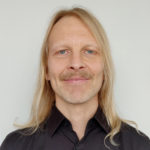New book maps links between global finance and the places we call home
Architecture professor Matthew Soules is a thought-provoking artist, designer and author. His latest offering is a new book, Icebergs, Zombies, and the Ultra Thin which tackles the impact of global capital on large cities like Vancouver, Toronto, Barcelona and New York.

111 West 57, a supertall residential skyscraper in Midtown Manhattan, New York City
Matthew Soules has a multifaceted career. The busy architecture professor at UBC is a thought-provoking artist, designer and author.
Most recently Soules contributed to the design for šxʷƛ̓ənəq Xwtl’e7énḵ Square (formerly known as the Vancouver Art Gallery North Plaza) where he designed the white, cloudlike pavilion at the northeast corner.

He is also a sought-after commentator on architecture and design who creates provocative public art, from the award-winning pissoir in Victoria — touted as the “world’s coolest public urinal” — to a large-scale installation, fashioned out of construction safety netting, for the Burrard Street Bridge in Vancouver.
His latest offering is a new book, Icebergs, Zombies, and the Ultra Thin (Princeton Architectural Press, 2021) which tackles the impact of global capital on large cities like Vancouver, Toronto, Barcelona and New York.
In this Q&A, he explains what the book has to say about the future of housing and urban design, and the way it shapes our lives.
What inspired the book’s title, Icebergs, Zombies, and the Ultra Thin?
This work comes out of my research a few years ago that was funded by the Social Sciences and Humanities Research Council. I was particularly interested in how the use of architecture as an investment tool has accelerated in the past few decades, contributing to ever greater inequality in our cities and destabilizing the global economy. This situation was highlighted with the global financial crisis of 2007 and 2008. I wanted to explore the role of architecture in this dynamic.
Sparsely occupied, ultra-thin “pencil towers” are proliferating in certain cities. We’re seeing “iceberg” homes extending many stories below street level. In many cities around the world, there is growing concern over unoccupied neighbourhoods and abandoned housing developments. These “zombie” neighbourhoods are not quite dead, but not fully alive either.
Your central argument is about how finance capitalism transforms not only architectural forms, but also the very nature of our cities and societies. Can you elaborate?
Buildings fill three prominent functions. They provide shelter and protection against the elements. They embody cultural values, which is why a building in 18th century Jakarta looks different than one in 21st century Vancouver. Finally, buildings are always a store of wealth—they manifest wealth, and they can be traded.
In the book, I make the claim that in recent years the financial store of wealth and market dimension of building has increased in prominence because of the logic of finance capitalism. Increasingly, buildings are viewed as a way to store and even create wealth. This is now pushing aside the other two functions. Building, and particularly housing, is more and more seen as a financial tool as opposed to its primordial function as shelter.
How does this affect cities like Vancouver and the people who live in them?
Of course, buildings being treated as investment vehicles results in inequality and a lack of affordability. As more and more capital flows through real estate, prices escalate and there is an increasing disconnect with local incomes.
Part of this means buildings look and function differently. The current emergence of strange shapes in Vancouver housing projects is a deliberate attempt to attract capital investment through iconicism.
At the same time that buildings look more exotic from the exterior, architectural space is increasingly standardized and simplified to function better in line with what investors want.
The podium-tower model, which so much of Metro Vancouver’s growth takes shape in, can even be understood as an example of this. The podium raises the bulk of the units off the ground, isolating them from the messy unpredictability of the public realm. And the thin tower proportions have the effect of minimizing the number of units on any given floor. The result is that each condominium unit is less likely to be affected by social lives of those around it. The very form of the podium tower protects the architectural assets for those who invest in it. In the process, our social lives are enervated and devalued.
Paradoxically, designers and developers are also adding all sorts of bells and whistles—infinity pools, concierge service, Peloton rooms—to make things look and feel complex even though at base they are standardized. It’s a kind of compensation for the ruthless investment logics at play.
Is there a way forward that balances these complex and perhaps contradictory needs?
A way out of inequality and socially limited urban environments will take work on many fronts. Architecture is vital to the effort and can help by designing housing that is not focused on exterior appearances but makes delightful and optimistic contributions to how residents can interact with each other. Our goal should be to build a world where housing is a place for making and maintaining human contact, not for speculation.
To access a review copy of the book, or schedule interviews, please contact lou.bosshart@ubc.ca
Interview language(s): English
[envira-gallery id=”265094″]



